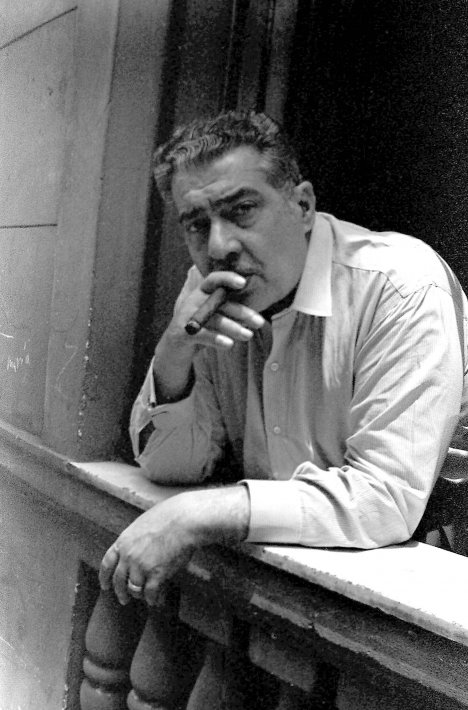4.1.2.2.5 The poetic work of José Lezama Lima (1910 – 1976) after 1959

It is well known that José Lezama Lima’s poetry was not as prolific after the triumph of the Revolution in 1959 as it had been until then; although this is partly explained by the preeminence he gave at that time to the final formulation of his magnum opus, “Paradiso,” and, in general, to narrative, which never became independent of his lyrical worldview.
His work “Dador” had already been fundamentally conceived when the triumph of the Revolution came, so his poetic work in a strict sense – his entire literary work constitutes a great poetic corpus – is contained in “Fragments to his Magnet”, a book that will be addressed more broadly in another section.
In a general sense, it is worth considering that if the revolutionary impetus did not become poetic exaltation, it did establish itself in this historical period, compatible with its concept of an “imaginary era” of great creative inspiration in the face of the disintegration taking place in other material and spiritual spheres.
It is true that Lezama’s figure suffered a certain intellectual abuse during a period of the revolutionary period, more specifically the so-called gray five-year period, between 1970 and 1975, evident in the official resistance he encountered to attempts to publish his work. Unfortunately, he died in 1976, when a process of rectification was already looming that would modify the ossified and monolithic cultural policy corresponding to the aforementioned period and which had been brewing for some time.
However, it is not possible to assume that this affected his literary work or his life, since without self-sufficiency he was above the ups and downs of literary reception, in this case mediated by politics, about which he would indirectly state:
“It’s true, as they say, that I’ve been a very controversial figure in Cuban culture, but that approach remains like a law of corsi and recorsi. When I’ve been furiously denied, I’ve known how to wait, working and smiling, and soon after, ricorsi has arrived, the friendly approach, the recognition, and the study of my work.”
Even with these contradictions, it is important to note that although the literary value of Lezama’s work was already established from his first collection of poems and definitively strengthened from the Origenist sphere, it was not until after the triumph of the Revolution, with the impact of “Paradiso,” that its author began to be recognized worldwide.
The cultural possibilities brought about by the Revolution also expanded the circle of its readers, who would pay it a veneration that remained unchanged during the aforementioned five-year period and that grows daily among epigones and true initiates who take their own paths.








